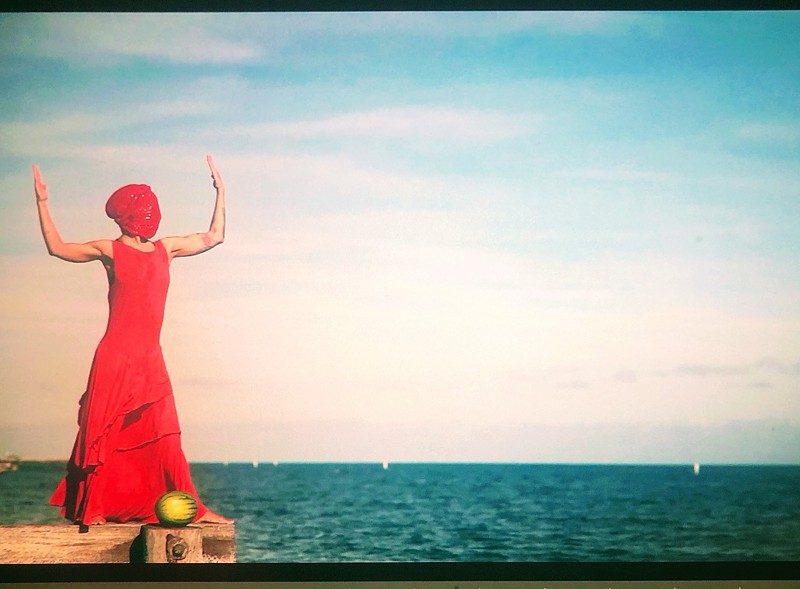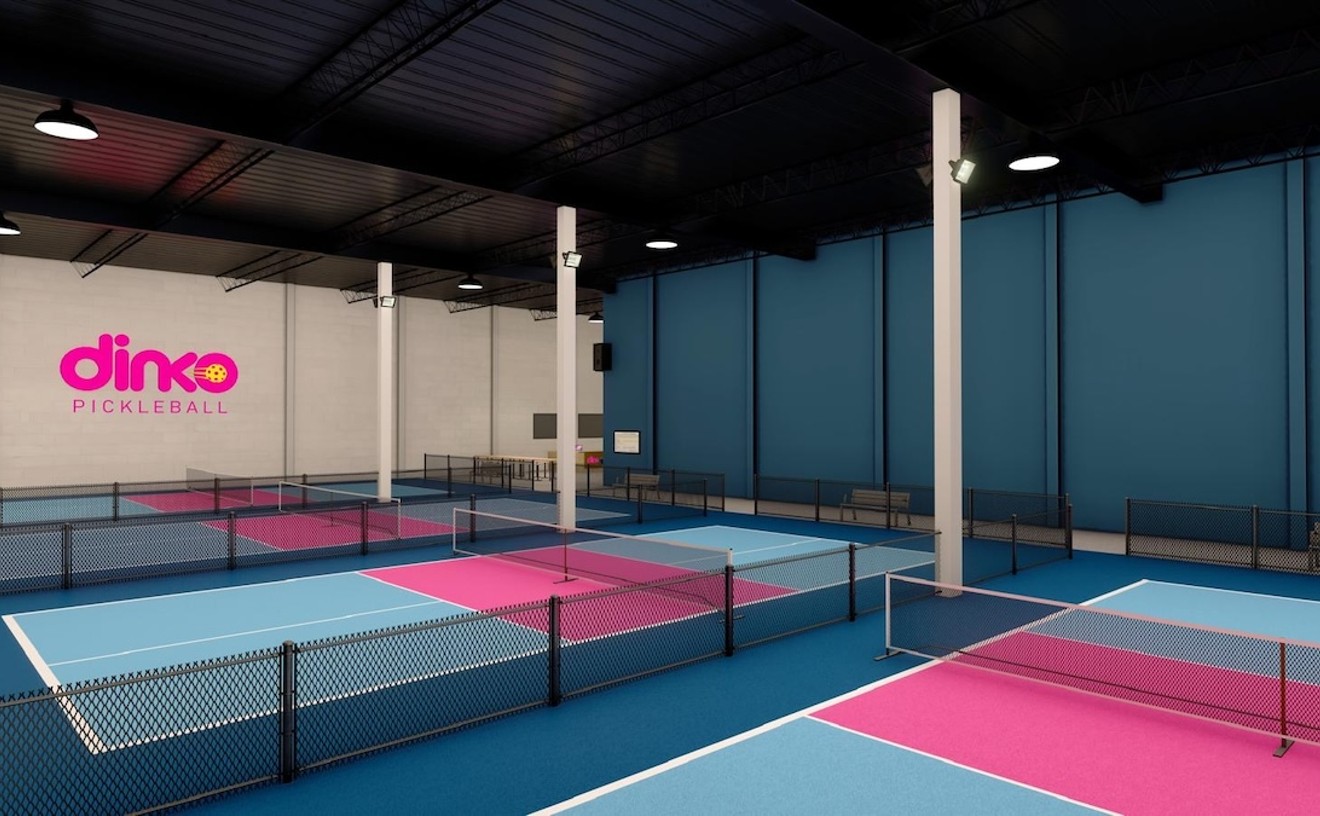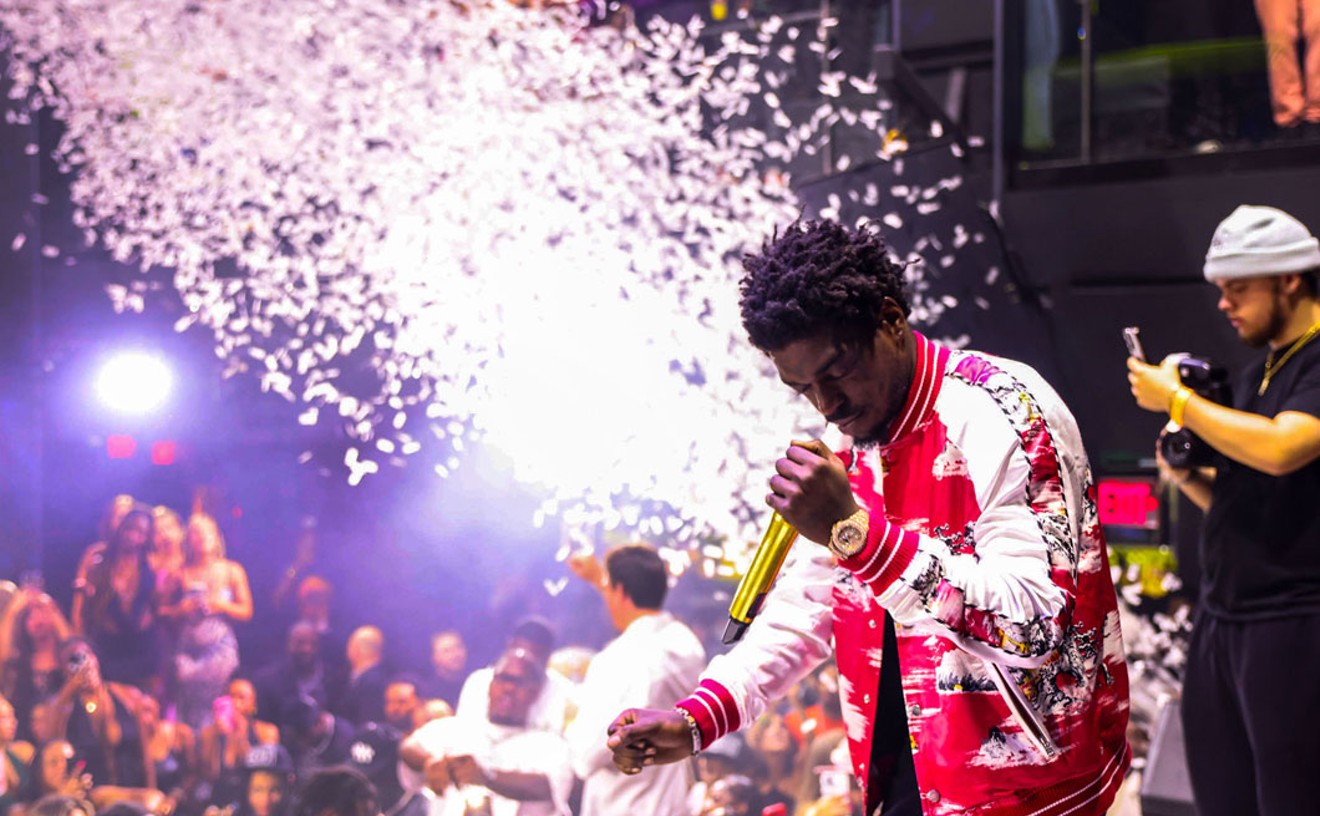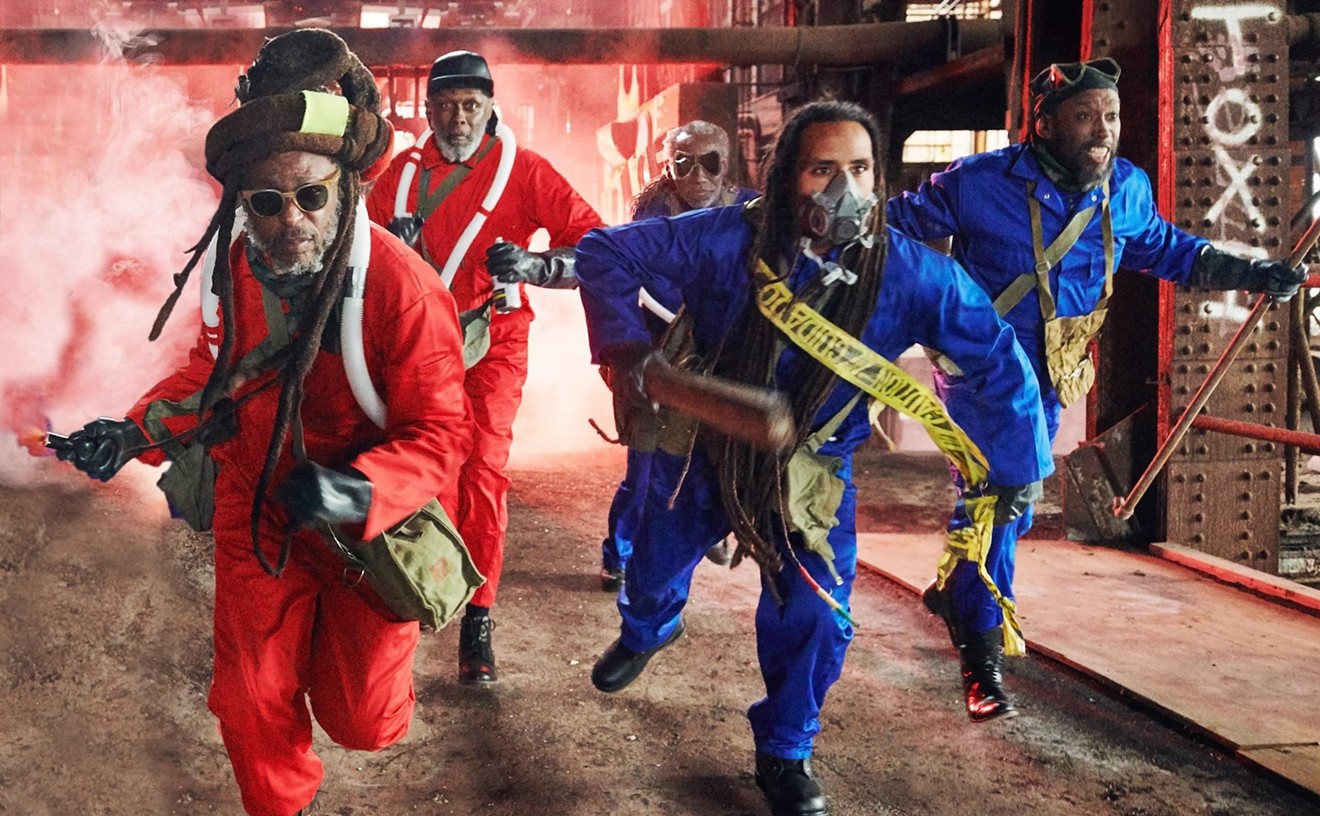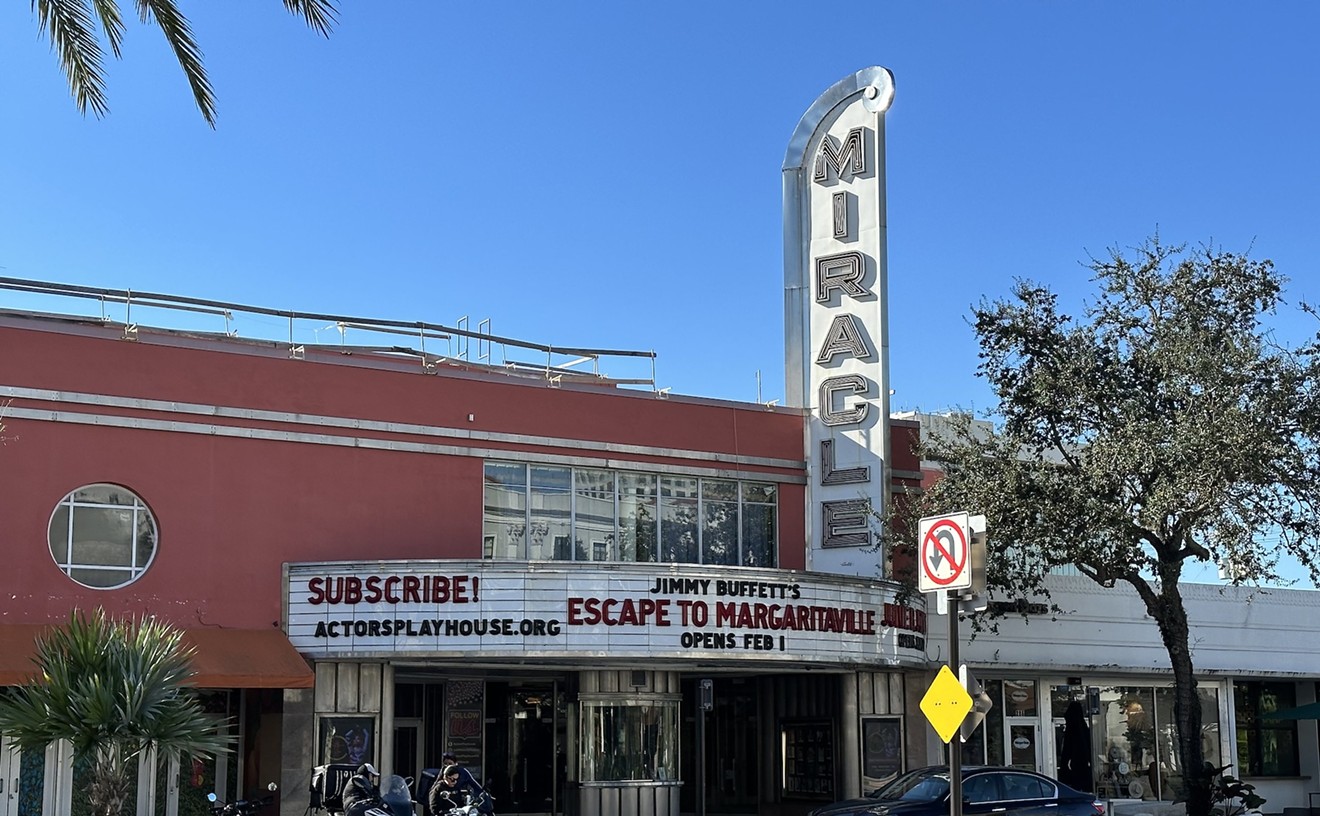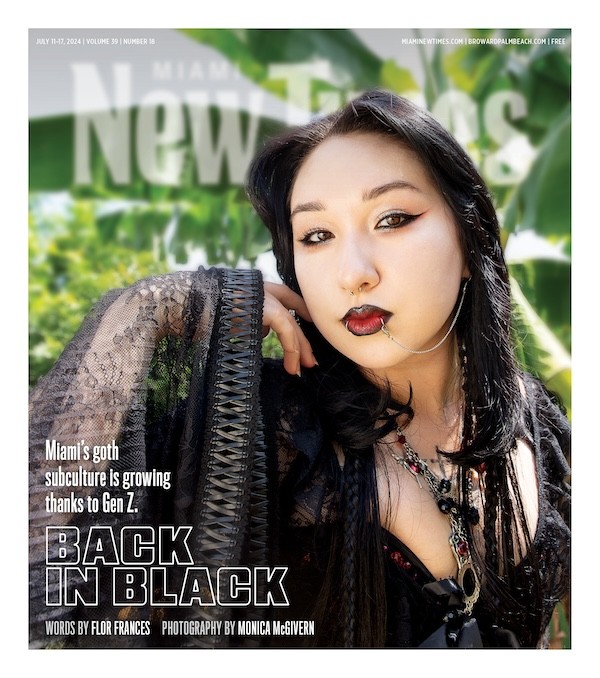It was the late 1980s and her mother enrolled her in classes at Edwin Holland School of Dance, not far from their North Miami home. Unbeknownst to her at the time, Williams would learn more than just ballet, tap, and jazz from one of the city's eminent dance instructors. She would become immersed in a safe space Holland created for young Black dancers.
Holland's school was a Black dance studio that felt more like family, where caring elders nurtured Williams' innate passion. The studio closed in 2005, falling victim to the shifting currents of time. By then, Williams' acute sense of community through dance propelled her to study at New World School of the Arts, Fordham University, and at the Alvin Ailey Program in New York City.
"Because of the environment Edwin Holland created, I was really immersed in his whole value of community," William says. "I wanted to stay in it."
Today, dance is a spiritual practice for Williams. It is a bridge between the ancestral and intuitive, connecting her to songs and dances of the diasporas. It was one of the first ways she recognized her connection with the spiritual, using it as a tool to experience life. And it's one of many rituals she performs to transmute negative energy.
Williams explores the liberating power of community and ritual in "Currents," her latest immersive installation at the Museum of Contemporary Art North Miami, on view October 6-10. For five days, Williams will transform the museum into an ethereal space for ritualistic contemplation, combining historical maps of South Florida, two feature dance films, and interactive elemental offerings, inviting participants to envision a new world.
"The new world for me is going back to the medicines of our ancestors and the stories and the lessons of our ancestors without it being so taboo," Williams explains.
"Currents" was created as part of the 2021 Live Arts Lab Alliance (LALA) artists-in-residence program addressing climate change and sustainability, but Williams began dreaming of the installation in early 2020 as the pandemic shut down the world. She took the slowing down as a signal from the cosmic mother — or "dark goddess" — that society needed to reset.
"I took it as a sign that there is too much disconnection from the elements and how we behave and respond to them," she says.
At the same time, the global racial reckoning had Williams thinking about the ritual as a way to transmute negative energy that has consciously or unconsciously been given to the earth. As the saying goes, everything is energy — and Williams harbors no doubt that the earth is the ultimate recipient of these offerings.
Williams fell into a spiral thinking about and researching the systems dividing the community in South Florida and its intersections: climate change, gentrification, racism, police brutality, reproductive rights. Her takeaway was that humanity lacked genuine care and reverence for the archetypal "mother" and her "children" — resulting in a ritual of violence she hopes to combat. In America's patriarchal society, the feminine energy of collaboration has been subverted by that of domination, which trickles down into as poor treatment of nature.
"Even the way how you walk around the world is an offering. What you are giving to the space that you're entering, that's an offering," Williams asserts. "Do you think that fear, that anxiety, that loss going into our waters and our soil is helping us live a nice peaceful life? No, it's all energy. If you have people who are aggressively and consciously killing people, killing animals, this is a ritual for them — point-blank. It's a ritual; it's a practice."
Williams hopes to inspire participants to confront South Florida's troubled history and embrace daily rituals as a way to replenish the earth and heal the elements. Anything can be a ritual, she insists. Even something as simple as drinking water in the morning is a way to connect and become present.
"Anytime you are having a conscious, head, heart, hands experience with the divine, in a fashion that is repeated, you operate differently, you treat things differently," she says. "That creates change."
Visitors to "Currents" are greeted by a series of maps of South Florida that provide context. One map depicts the areas where fires broke out during the 1980 McDuffie riots. Another map showcases areas with a high level of arsenic in the soil. A third depicts crisis pregnancy centers, where young women are dissuaded from having an abortion under the guise of medical treatment.
Williams experienced the latter firsthand. In 2017, she was pregnant with her first child and needed documentation to prove she was pregnant to qualify for Medicaid — standard state protocol. A quick Google search led her to a medical clinic in North Miami, where she thought a doctor would sign her paperwork and she'd be on her way. To her surprise, no doctor was present. The person tending to her wasn't even a licensed nurse. She assured them she would carry her child to full term, but they still performed their rote explanation of childbirth. They showed her the different stages of a baby's growth using figurines and asked her what her religious practice was. That's when things began to click for her.
"There is this agenda to not honor the mother. Whether you decide to give birth or not, it's still a sacred practice," Williams says. "There is a vulnerability to being pregnant, especially in a society that doesn't like women."
Williams superimposes the map over a photo of herself when she was pregnant in 2017. The image was part of a project exploring the five stages of grief in parallel with Yoruba folklore. Here, she embodies the story of Olurombi and Iroko Oluwere in parallel with bargaining.
"There is a necessity to align the protection of the earth with the protection of Black folks and Black people who have wombs," she asserts.
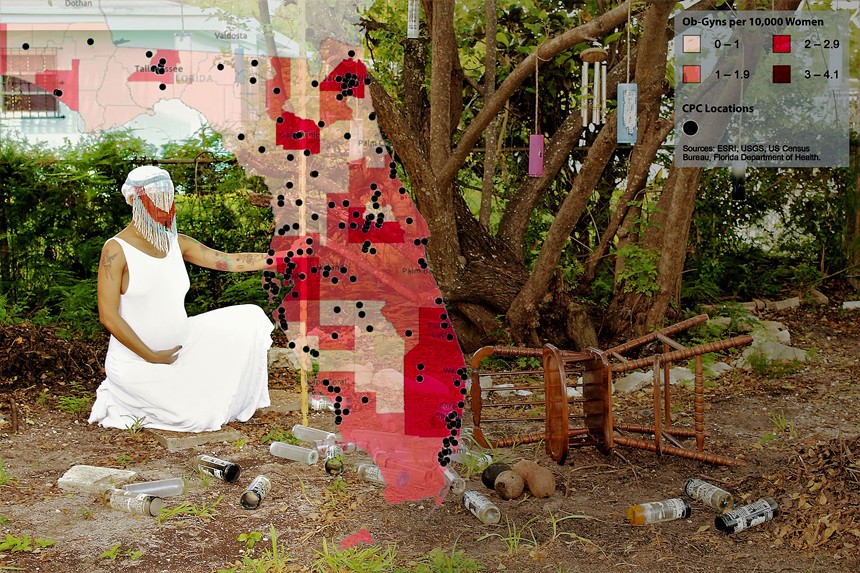
Williams' exhibition will feature a map of "Crisis Pregnancy Centers" across Florida.
Photo courtesy of Hattie Mae Williams
"It didn't make sense to me — the whole thing of blood rituals mandated by men. Women shed blood," Williams points out. "If you need blood for something, the woman has it. The woman has the power. The woman is the creator."
Following the two films, participants are invited to enter different spirit chambers representing the four elements. Each room was created with the idea of having an isolated, private moment of connecting with each element. Busy work schedules and concrete offices might separate people from nature, robbing them of the time to experience it, but in Williams' path to a new world, the portal to the elements is open. For air, participants will feel air blowing on them; for earth, they will stand on grass and soil; for water, they will be able to offer ritual libations if they care to.
Last, Williams invites participants to visit the museum's exhibition of works by Michael Richards, with whom she's thrilled to share the space. Richards, who died at age 38 in the 9/11 World Trade Center attack, was an emerging artist whose incisive aesthetic was a metaphor to investigate racial inequity and the tension between assimilation in his art. He was an artist-in-residence at ArtCenter/South Florida (now known as Oolite Arts) and developed a community in Miami. Williams negotiated a discounted $3 ticket to the museum for visitors to her exhibit who also want to see the Richards show — the first museum retrospective of his work.
For Williams, the themes of both exhibits are intertwined.
"How are we liberating ourselves? How are we creating new worlds that aren't refabricating the same structures where we're not free?" she wonders. "How do we, as a group of people, as a community, survive together?"
"Currents." Noon to 7 p.m. Wednesday, October 6, and 10 a.m. to 5 p.m. Thursday, October 7, through Sunday, October 10, at the Museum of Contemporary Art North Miami, 770 NE 125th St., North Miami; mocanomi.org. Admission is free with RSVP via liveartsmiami.org.

